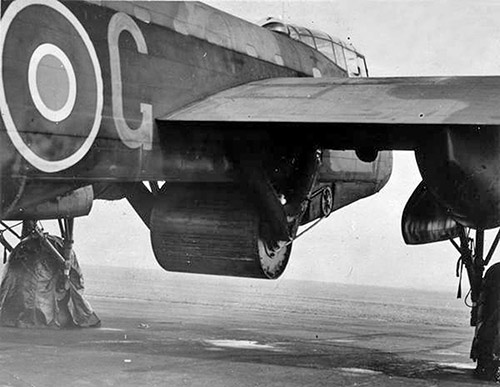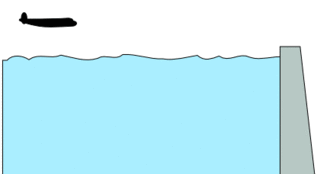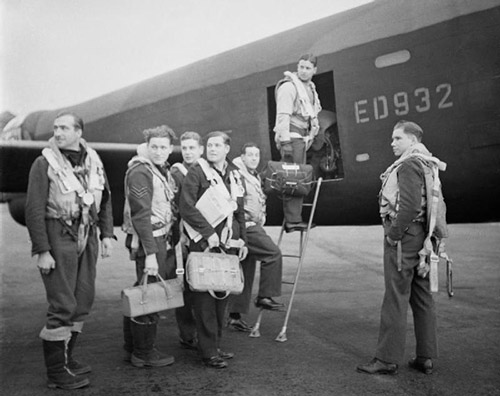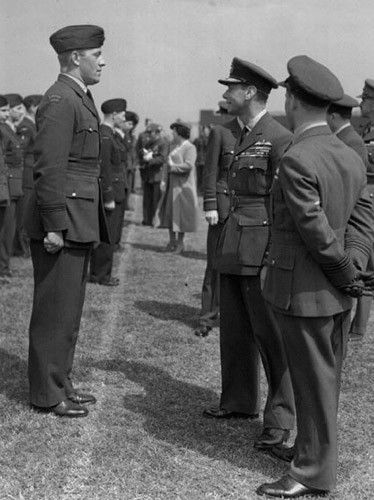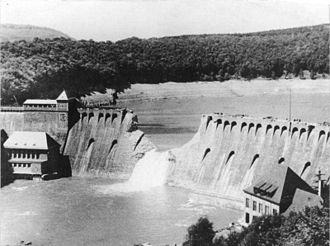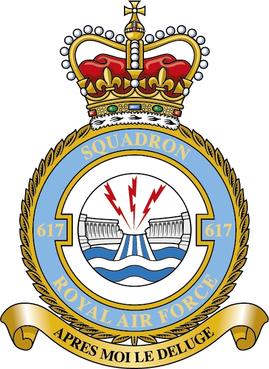The book is titled ‘Trial and Tribulation’—a Churchill quote, of course—and is set in 1943. That was the year in which Britain and the United States intensified their bombing campaigns against Germany, causing widespread damage on the ground and shockingly high casualty rates among the air crews on both sides.
For my next blogs I’ve selected four bombing operations that occurred in 1943. I’m calling this series ‘Profiles in Courage’ in tribute to the men who flew these horribly dangerous missions 80 years ago this year.
- Operation Chastise, an RAF Bomber Command attack on three dams in the Ruhr valley, May 16th /17th
- Operation Gomorrah, a primarily Bomber Command series of attacks on Hamburg, July 23rd – August 3rd
- Operation Tidal Wave, an attack by the USAAF Eighth and Nineth Air Forces on oil refineries at Ploiesti, Romania, August 1st
- Mission 84, an Eighth Air Force attack on industrial targets in Schweinfurt and Regensburg on August 17th
I’ll begin with Chastise.
Operation Chastise, often called the Dambusters raid, is probably the best known of all RAF Bomber Command’s missions in World War II. Eighteen Lancaster bombers of 617 Squadron, led by Guy Gibson, bombed three dams in Germany’s Ruhr industrial heartland, breaching two of them. The weapon they used was the almost miraculous Upkeep bouncing bomb designed by Barnes Wallis.
The purpose of the raid was to destroy the hydroelectric power that supplied the Ruhr steel industry and to cause widespread destruction by flooding the factories and mines in the valleys below the dams.
This story has two themes. One is Barnes Wallis’s brilliant combination of imagination to conceive the bomb and engineering expertise to build it. The second theme is the immense skill and fortitude of Gibson and his crews, who had to overcome the dangers and difficulties of flying over enemy territory at night and then attack their targets with pinpoint accuracy.
Given the technology that existed at the time the only way to strike at a dam was to use a torpedo that could strike it under water, but the dams were protected by torpedo netting which made that impossible. Wallis’s solution was to skip a bomb across the surface of the water over the nets until it hit the dam, and then let the bomb sink under water before exploding, as shown in this graphic:
The second part of the story is 617, a Bomber Command squadron formed specifically for this raid, led by Gibson and manned by experienced crews pulled from other squadrons. Nineteen Lancasters took part in the raid, each with a crew of seven. Eight aircraft were lost with 53 crew members killed and 3 captured, a casualty rate of 40%. The raid required the aircraft to fly to Germany at night, find the dams, and then approach the dams at exactly 60 feet and 240 mph, and to release the bombs exactly 800 yards from the dams to allow the bombs to bounce exactly seven times before sinking against the dam wall.
Such was the difficulty of achieving this level of precision, and the professional determination of the crews, that one crew, led by the American ‘Big Joe’ McCarthy, made nine horribly dangerous runs before being satisfied and releasing their bomb.
Gibson (on the steps) and his crew before takeoff on May 16th.
After the raid ‘Big Joe’ meets King George VI (Gibson is on the right).
The Möhne Dam
The Eder Dam
Thirty-four of the air crew received gallantry awards including the Victoria Cross for Guy Gibson. 617 was kept together as a special precision bombing unit and undertook several more remarkable raids including the sinking of the battleship Tirpitz. Barnes Wallis continued to design and build extraordinary—and extraordinarily successful—bombs, including the 12,000 lb. Tallboy that sank the Tirpitz and the massive ten-ton Grand Slam earthquake bomb which could penetrate 20 feet of reinforced concrete.
Gibson was killed in action in 1944, McCarthy survived the war and died in 1998, Barnes Wallis was knighted and died in 1979, and the last 617 crew member—Johnny Johnson, a gunner in McCarthy’s crew—died in 2022 aged 101.
617 lives on: King George gave it the motto ‘Apres moi le deluge’—’after me the flood’—and 617 now flies F35Bs based on the new Queen Elizabeth class aircraft carriers.
For my next blog: Gomorrah, a very different bombing raid three months after Chastise.



